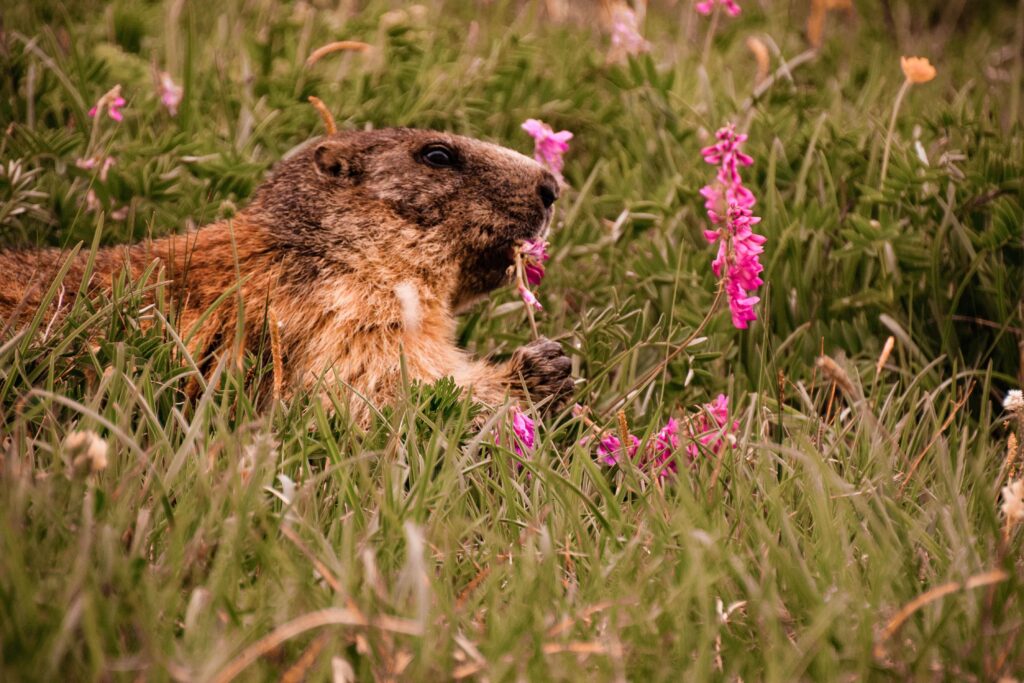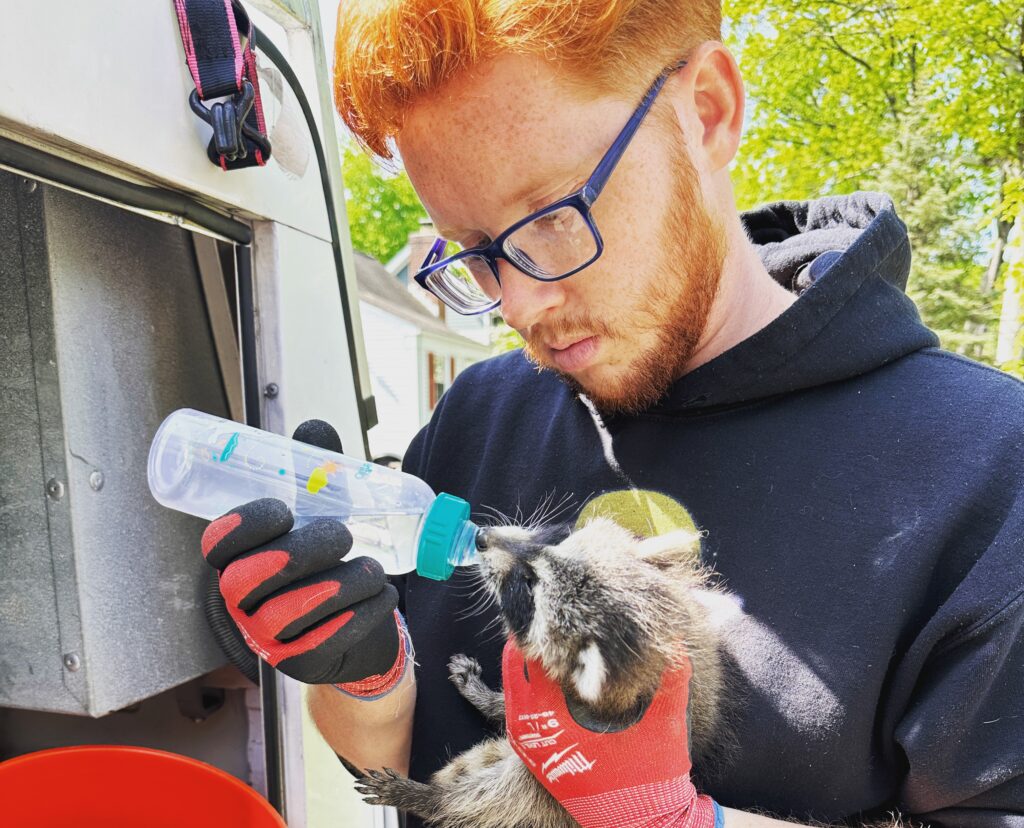As the seasons shift and warmer weather beckons, homeowners in New Jersey often find themselves facing a familiar adversary: groundhogs. These furry critters, while seemingly harmless, can wreak havoc on gardens, lawns, and even structural foundations with their voracious appetite and burrowing habits. For those grappling with groundhog woes, understanding effective control methods is crucial, and trapping remains one of the most reliable solutions. In this guide, we delve into the art of trapping groundhogs in NJ, offering insights, tips, and techniques to help homeowners reclaim their outdoor spaces.
Trapping groundhogs in NJ requires a blend of knowledge about local regulations, understanding of groundhog behavior, and the proper utilization of trapping equipment. Whether you’re a seasoned homeowner dealing with recurring groundhog invasions or facing this challenge for the first time, mastering the fundamentals of trapping can make all the difference in regaining control over your property. Throughout this article, we’ll explore the intricacies of groundhog control, providing actionable advice to empower homeowners in their quest to mitigate groundhog-related issues. So, let’s dive in and discover the secrets to effective groundhog trapping in the Garden State.
Key Takeaways
- Understand groundhog behavior to effectively trap them in NJ.
- Choose the right trap and bait for successful trapping.
- Regular monitoring and maintenance are essential for trapping success.
- Implement preventive measures to reduce future groundhog encounters.
- For professional assistance, contact Kritter Catchers at +1-877-468-5748.
Understanding Groundhog Behavior
To effectively trap groundhogs in NJ, it’s essential to gain insight into their behavior and habits. Groundhogs, also known as woodchucks, are primarily herbivorous rodents that thrive in diverse habitats, including urban and suburban landscapes across New Jersey. These creatures are renowned for their burrowing prowess, with intricate tunnel systems often extending several feet underground. Groundhogs typically construct burrows for shelter, hibernation, and raising offspring, making them formidable opponents for homeowners seeking to protect their property.
In the spring and summer months, groundhogs are most active, foraging for vegetation to satisfy their appetites. Gardens and lawns often fall victim to their relentless grazing, leading to frustration for gardeners and homeowners. Moreover, groundhog burrows can undermine the structural integrity of buildings and pose safety hazards, especially if located near foundations or walkways.
Trapping groundhogs in NJ requires an understanding of their daily routines and preferences. Groundhogs are diurnal animals, meaning they are active during the day, particularly in the early morning and late afternoon. Observing their behavior patterns and identifying high-traffic areas around your property can enhance trapping success. By leveraging this knowledge and employing strategic trapping techniques, homeowners can effectively manage groundhog populations and mitigate the associated damage to their landscapes.
Choosing the Right Trap
When it comes to trapping groundhogs in NJ, selecting the appropriate trap is paramount to success. Fortunately, homeowners have several options to consider, each with its own advantages and suitability for different scenarios. Live cage traps are among the most popular choices for capturing groundhogs humanely. These traps typically feature a wire mesh enclosure with a trigger mechanism that closes the door once the groundhog enters to access the bait.
When selecting a trap, it’s essential to consider factors such as size, durability, and ease of use. Groundhog traps should be large enough to accommodate the size of the target species comfortably. Additionally, opt for traps constructed from sturdy materials to withstand outdoor conditions and potential attempts by trapped animals to escape.
For homeowners in New Jersey, it’s crucial to choose traps that comply with local regulations regarding the trapping and relocation of wildlife. Certain jurisdictions may have specific requirements or restrictions on the types of traps allowed and the humane treatment of captured animals. By familiarizing yourself with these regulations, you can ensure that your trapping efforts are legal and ethical.
Ultimately, the right trap for trapping groundhogs in NJ will depend on your specific circumstances and preferences. Whether you opt for a traditional cage trap or explore alternative options, prioritizing humane treatment and adherence to local laws will contribute to a successful and responsible approach to groundhog control.

Baiting Techniques
Effective baiting is a critical component of successful groundhog trapping in NJ. Choosing the right bait can significantly increase the likelihood of attracting groundhogs to your trap. Groundhogs are herbivores, primarily feeding on a variety of vegetation such as clover, alfalfa, and garden vegetables. Therefore, fresh fruits and vegetables make excellent bait options. Favorites among groundhogs include apples, carrots, and leafy greens.
To maximize baiting effectiveness, it’s essential to place the bait strategically inside the trap. Position the bait near the trigger mechanism to entice groundhogs to enter the trap fully. Additionally, consider adding a few extra pieces of bait just outside the trap to lure groundhogs closer and encourage them to investigate further.
Experimenting with different bait options and placement strategies can help fine-tune your trapping efforts and increase success rates. Remember to monitor the trap regularly and replenish the bait as needed to maintain its attractiveness. By employing effective baiting techniques, homeowners can enhance their chances of trapping groundhogs in NJ and effectively managing their presence on their property.
Setting Up the Trap
Once you’ve selected the right trap and baited it accordingly, the next step in trapping groundhogs in NJ is proper setup. Placement of the trap plays a crucial role in its effectiveness, so it’s essential to choose strategic locations where groundhogs are likely to pass.
Start by identifying areas of your property where groundhog activity is prevalent. Look for signs such as burrow entrances, chewed vegetation, or droppings. These are prime locations to set up your trap. Additionally, consider placing traps along the perimeter of gardens or near structures where groundhogs may be seeking food or shelter.
When positioning the trap, ensure that it is stable and securely anchored to the ground to prevent it from being tipped over or moved by trapped animals. You may need to use stakes or weights to secure the trap in place effectively.
Monitoring and Maintenance
Once your traps are set, monitoring them regularly is crucial for successful groundhog trapping in NJ. Check your traps at least once a day, preferably in the early morning or late afternoon when groundhogs are most active. This allows you to promptly release any captured groundhogs and reset the traps for continued control efforts.
During your inspections, be vigilant for any signs of activity around the traps, such as disturbed bait or fresh tracks. This can indicate that groundhogs are in the vicinity and may have interacted with the traps. Additionally, inspect the traps for any damage or wear and tear that could compromise their effectiveness. Replace any worn components or repair any damage promptly to ensure that your traps remain in optimal condition.
When handling trapped groundhogs, always exercise caution to avoid injury to yourself and the animal. Approach the trap calmly and carefully, and use gloves to protect yourself from scratches or bites. Follow proper procedures for releasing the groundhog safely, adhering to local regulations regarding relocation or disposal.
Preventive Measures
While trapping groundhogs in NJ can be an effective short-term solution, implementing preventive measures can help homeowners address the root causes of groundhog infestations and reduce the likelihood of future encounters. One proactive approach is to modify the landscaping around your property to make it less appealing to groundhogs. This may involve removing excess vegetation, especially near buildings or garden beds, and installing barriers such as fences or mesh wire to deter groundhogs from accessing vulnerable areas.
Additionally, sealing off potential entry points around the home can prevent groundhogs from gaining access to crawl spaces, basements, or other structures where they may seek shelter. Inspect the exterior of your home for gaps or cracks that could serve as entry points and seal them with caulk or other appropriate materials.
Regular maintenance of your property is also essential for preventing groundhog infestations. Keep grass and vegetation trimmed to reduce hiding places for groundhogs and eliminate potential food sources. Properly store food and waste materials in sealed containers to minimize odors that could attract groundhogs and other wildlife.
FAQs
Are groundhogs dangerous to humans or pets?
While groundhogs are not typically aggressive, they can become defensive if cornered. They may also carry diseases and parasites, posing a potential risk to pets and humans.
What should I do if I catch a groundhog in my trap?
Safely approach the trap, wearing gloves, and handle the trapped groundhog carefully. Follow local regulations for releasing or relocating the animal.
Can I relocate a trapped groundhog, or is there a specific protocol I should follow?
Check with local authorities for guidelines on relocating groundhogs. Some areas may require permits or specify certain relocation sites.
How can I prevent groundhogs from returning to my yard after trapping them?
Implement preventive measures such as sealing off entry points, removing food sources, and modifying landscaping to deter groundhogs from returning.
Are there any natural deterrents or repellents for groundhogs?
Some homeowners use garlic, castor oil, or commercial repellents to deter groundhogs. However, their effectiveness may vary, and trapping remains the most reliable method for control.
Conclusion
In conclusion, trapping groundhogs in NJ requires a combination of knowledge, strategy, and diligence. By understanding groundhog behavior, selecting the right traps and bait, and employing proper trapping techniques, homeowners can effectively manage groundhog populations and protect their properties from damage.
However, trapping is just one aspect of comprehensive groundhog control. Implementing preventive measures such as sealing off entry points, modifying landscaping, and regular maintenance can help minimize the risk of future infestations.
For those facing persistent groundhog issues or seeking professional assistance, Kritter Catchers stands ready to help. With our expertise and humane trapping methods, we can provide effective solutions tailored to your specific needs. Don’t let groundhog problems take over your yard – call Kritter Catchers now at +1-877-468-5748 and reclaim your outdoor space today!


